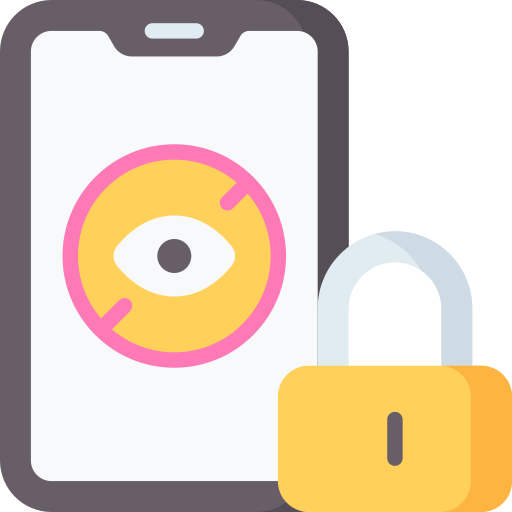Understanding the Importance of Wi-Fi Parental Control
The internet has become an integral part of our daily lives, offering a wealth of information and opportunities for communication. However, it also presents potential risks, especially for children who may not yet have the knowledge or experience to navigate the online world safely. This is where Wi-Fi parental control comes in. By implementing this technology, parents can ensure that their children are protected from inappropriate content and potentially harmful interactions.
One of the key reasons why Wi-Fi parental control is important is because it allows parents to establish boundaries and limits for their children’s online activities. With this tool, parents can block access to certain websites or types of content that they deem unsuitable for their child’s age or maturity level. This helps create a safe digital environment where children can explore the internet without stumbling upon explicit material or engaging with strangers who may have malicious intentions.
Another crucial aspect of Wi-Fi parental control is its ability to monitor and track a child’s online activities. Parents can gain insights into which websites their child visits most frequently, what type of content they engage with, and even how much time they spend online. This valuable information enables parents to identify any potential red flags or concerning patterns in their child’s behavior, allowing them to intervene promptly if necessary.
By understanding the importance of Wi-Fi parental control, parents can take proactive steps towards protecting their children in today’s digital age. It provides peace of mind knowing that safeguards are in place to shield young ones from harmful online experiences while still allowing them to enjoy all the benefits that technology has to offer.
Identifying the Risks of Unfiltered Internet Access for Children
Children today have unprecedented access to the internet, which can be both a blessing and a curse. While it provides them with valuable educational resources and opportunities for social interaction, unfiltered internet access also exposes them to numerous risks. One of the most significant dangers is exposure to inappropriate content. Without proper filters in place, children may stumble upon explicit material or encounter online predators who exploit their vulnerability.
Another risk of unfiltered internet access is cyberbullying. Children can become targets of harassment, intimidation, or humiliation through various online platforms such as social media or messaging apps. This form of bullying can have severe emotional and psychological consequences for young individuals, leading to anxiety, depression, and even suicide in extreme cases.
Furthermore, unfiltered internet access increases the likelihood of children engaging in risky behavior online. They may unknowingly download malware or viruses that could compromise their devices’ security or personal information. Additionally, unrestricted access exposes them to scams and fraudulent schemes that exploit their naivety.
It is crucial for parents to understand these risks and take proactive measures to protect their children from the potential harm that comes with unfiltered internet access. By implementing Wi-Fi parental control tools discussed later in this article, parents can create a safer digital environment for their children while still allowing them to explore the vast resources available on the internet securely.
Exploring the Key Features of Wi-Fi Parental Control Tools
Wi-Fi parental control tools offer a range of features designed to help parents monitor and manage their children’s internet usage. One key feature is the ability to set time limits for internet access. This allows parents to determine when and for how long their children can be online, helping to prevent excessive screen time and promote healthy habits.
Another important feature of Wi-Fi parental control tools is content filtering. Parents can customize settings to block or restrict access to certain websites or types of content that may be inappropriate or unsafe for their children. This helps create a safer online environment and gives parents peace of mind knowing that their children are protected from potentially harmful material.
Additionally, some Wi-Fi parental control tools provide activity logs and reports, allowing parents to track their child’s online activities. These logs can show which websites were visited, what apps were used, and how much time was spent on each activity. This information enables parents to have a better understanding of their child’s digital behavior and identify any potential risks or concerns.
By exploring these key features offered by Wi-Fi parental control tools, parents can take an active role in ensuring the safety and well-being of their children in the digital world. With the ability to set time limits, filter content, and monitor online activities, these tools empower parents with the necessary resources to guide their children towards responsible internet use while fostering open communication about digital safety.
Setting Up Wi-Fi Parental Control: Step-by-Step Guide
To set up Wi-Fi parental control, you first need to access your router’s settings. Open a web browser on your computer or mobile device and enter the IP address of your router in the address bar. This will take you to the login page for your router’s settings.
Once you’re logged in, navigate to the parental control section. The location may vary depending on your router model, but it is typically found under a “Parental Controls” or “Access Control” tab. Click on this tab to proceed.
Next, you’ll need to create user profiles for each member of your family. Assign a unique username and password for each profile and specify the level of internet access they should have. You can choose from pre-set filtering options or customize specific websites or categories that are allowed or blocked.
After creating user profiles, set time limits for internet usage if desired. Many routers offer scheduling options where you can specify when certain devices can access the internet during weekdays and weekends.
Remember to save all changes before exiting the settings page. Once everything is configured, any device connected to your Wi-Fi network will be subject to these parental control settings.
By following these step-by-step instructions, you can easily set up Wi-Fi parental control and ensure a safer online environment for your children at home.
Customizing Parental Control Settings to Fit Your Family’s Needs
One of the key advantages of Wi-Fi parental control tools is their ability to be customized according to your family’s specific needs. By adjusting the settings, you can ensure that your children have a safe and appropriate online experience. The first step in customizing these settings is to determine what types of content you want to block or restrict access to. This may include explicit material, social media platforms, or certain websites that are not suitable for young children.
Once you have identified the content categories you wish to control, you can then set up filters and restrictions within your Wi-Fi parental control tool. Many tools offer pre-set filtering options based on age groups or content categories, but it is important to review and customize these settings according to your own preferences. For example, if there are specific websites or apps that you want to allow access to despite being in a restricted category, you can add them as exceptions.
Furthermore, consider setting time limits for internet usage using the scheduling feature provided by most parental control tools. This allows you to define when your child can access the internet and for how long each day. Customizing these time limits ensures that screen time remains balanced with other activities such as homework or physical exercise.
By taking advantage of the customization options available in Wi-Fi parental control tools, parents can tailor their internet restrictions specifically for their family’s needs. It is important to regularly review and update these settings as your child grows older and their online habits change. Remember that open communication with your child about why certain restrictions are in place will help them understand the importance of staying safe online while also fostering trust between parent and child.
Monitoring Online Activities: How Wi-Fi Parental Control Can Help
One of the key benefits of using Wi-Fi parental control is the ability to monitor your child’s online activities. With this feature, you can keep track of what websites they visit, the apps they use, and even their search history. This allows you to have a better understanding of their online behavior and identify any potential risks or red flags.
By monitoring your child’s online activities through Wi-Fi parental control, you can also ensure that they are not accessing inappropriate content. You can set filters and restrictions to block certain websites or categories that are not suitable for their age group. This helps create a safer online environment for your children and gives you peace of mind knowing that they are browsing the internet responsibly.
In addition to monitoring, Wi-Fi parental control tools often provide real-time alerts and notifications. These alerts can inform you if your child attempts to access blocked content or engages in potentially harmful online activities. By staying informed about their actions, you can promptly address any issues that arise and have open conversations with them about responsible internet usage.
Promoting Digital Well-being with Wi-Fi Parental Control
Promoting digital well-being is a crucial aspect of parenting in today’s technology-driven world. Wi-Fi parental control tools can play a significant role in ensuring the online safety and healthy screen time habits of children. By implementing these controls, parents can create a nurturing digital environment that supports their child’s overall well-being.
One key benefit of Wi-Fi parental control is the ability to set time limits on internet usage. With this feature, parents can regulate how much time their children spend online, preventing excessive screen time and promoting healthier activities such as physical exercise or social interactions. By encouraging balanced use of technology, parents can help their children develop good habits and maintain a healthy lifestyle.
Additionally, Wi-Fi parental control allows parents to filter content based on age-appropriateness. This feature ensures that children are not exposed to inappropriate or harmful material while browsing the internet. By setting up filters and blocking access to certain websites or applications, parents can provide a safe online experience for their children without constantly monitoring every activity they engage in. This promotes peace of mind for both parents and children alike.
By prioritizing digital well-being through the use of Wi-Fi parental control tools, families can establish healthy boundaries around technology usage and foster responsible behavior online. These controls enable parents to actively participate in shaping their child’s digital experiences while safeguarding them from potential risks associated with unfiltered internet access. It is essential for caregivers to stay informed about available features and regularly update settings according to evolving needs – ultimately creating an environment where young minds flourish safely in the vast realm of cyberspace.
Strategies for Open Communication with Your Children about Internet Safety
One of the most effective strategies for open communication with your children about internet safety is to establish trust and create a safe space for discussion. Start by having regular conversations about online activities, emphasizing the importance of responsible behavior and potential risks. Encourage them to share their experiences or any concerns they may have encountered while using the internet.
Another helpful approach is to set clear expectations and boundaries regarding internet usage. Have an open dialogue about appropriate websites, apps, and online content that align with your family values. Make sure your children understand the potential consequences of sharing personal information or engaging in risky behaviors online. By setting these guidelines together, you can foster a sense of ownership in their digital lives.
Additionally, actively listening to your children’s thoughts and concerns without judgment is crucial for maintaining an open line of communication. This means being present when they want to discuss something related to their online experiences or asking questions about what they’re encountering on the internet. Show genuine interest in their interests and use these opportunities as teachable moments to reinforce good digital habits.
By implementing these strategies consistently, you can create an environment where your children feel comfortable discussing internet safety issues openly with you. Remember that fostering open communication requires ongoing effort and adaptability as technology evolves; it’s important to regularly reassess and update your approach based on changing circumstances or new challenges that arise.
Troubleshooting Common Issues with Wi-Fi Parental Control
One common issue that users may encounter when using Wi-Fi parental control is difficulty accessing certain websites or online services. This can be frustrating for both parents and children, especially if the blocked content is necessary for educational purposes or other legitimate reasons. In such cases, it is important to check the settings of the parental control tool and ensure that any unintentional restrictions are lifted. Additionally, it may be helpful to consult the user manual or seek assistance from customer support to troubleshoot any technical issues that may be causing the problem.
Another potential challenge with Wi-Fi parental control is finding a balance between strict monitoring and allowing age-appropriate freedom for children. While it is crucial to protect children from harmful online content, overly restrictive settings can hinder their ability to explore and learn in a digital environment. Parents should regularly review and adjust their control settings based on their child’s maturity level and needs. Open communication with children about internet safety can also help address any concerns or frustrations they may have regarding parental controls.
Occasionally, Wi-Fi parental control tools may experience compatibility issues with certain devices or operating systems. This can result in inconsistent performance or limited functionality of the controls. To resolve this problem, users should ensure that they have installed the latest updates for both their devices and the parental control software. If compatibility issues persist, switching to an alternative tool or seeking professional advice might be necessary.
Remember that troubleshooting common issues with Wi-Fi parental control requires patience and flexibility as technology continues to evolve rapidly. By understanding these challenges and taking proactive steps to address them, parents can effectively utilize these tools while maintaining a safe online environment for their children.
Staying Updated: Best Practices for Long-Term Wi-Fi Parental Control Success
Staying updated with the latest developments in Wi-Fi parental control is crucial for long-term success. As technology evolves, new threats and risks emerge, making it essential to stay informed and adapt your strategies accordingly. One of the best practices for staying updated is to regularly check for software updates from your chosen parental control tool provider. These updates often include important security patches and feature enhancements that can improve the effectiveness of your controls.
Additionally, keeping yourself educated about current online trends and potential dangers can help you better understand the risks your children may face. Stay up-to-date by reading articles, attending webinars or workshops, or joining online communities focused on internet safety for families. By staying informed, you’ll be able to anticipate new challenges that may arise and adjust your parental control settings accordingly.
Another effective way to stay updated is by maintaining open communication with other parents who use Wi-Fi parental control tools. Sharing experiences and insights can provide valuable information about emerging threats or helpful tips for maximizing protection. Consider joining parent support groups or forums where you can exchange ideas and learn from each other’s experiences. This collaborative approach will not only enhance your knowledge but also create a supportive network of like-minded individuals who share similar concerns about their children’s online safety.
What is Wi-Fi parental control?
Wi-Fi parental control is a tool or feature that allows parents to regulate and monitor their children’s internet usage on devices connected to their home Wi-Fi network.
Why is Wi-Fi parental control important?
Wi-Fi parental control is important because it helps protect children from potential online risks, such as inappropriate content, cyberbullying, and online predators. It allows parents to set limits and keep track of their children’s online activities.
What are the risks of unfiltered internet access for children?
Unfiltered internet access exposes children to various risks, including exposure to explicit or violent content, interaction with strangers, cyberbullying, addiction to online activities, and potential privacy breaches.
What key features should I look for in Wi-Fi parental control tools?
Some key features to consider in Wi-Fi parental control tools include content filtering, time restrictions, access scheduling, device monitoring, and remote management capabilities.
How do I set up Wi-Fi parental control?
Setting up Wi-Fi parental control typically involves accessing your router’s settings, enabling parental control features, and customizing the settings based on your preferences and your child’s needs. The exact steps may vary depending on the router model.
How can I customize parental control settings to fit my family’s needs?
To customize parental control settings, you can set specific time limits for internet usage, block or allow certain websites or apps, create different profiles for each family member, and adjust the level of filtering based on age appropriateness.
How can Wi-Fi parental control help me monitor my children’s online activities?
Wi-Fi parental control allows you to monitor the websites visited, search terms used, and the time spent online by your children. Some tools also provide real-time activity notifications and reports to help you stay informed.
How can Wi-Fi parental control promote digital well-being?
Wi-Fi parental control promotes digital well-being by helping parents manage screen time, encourage healthy online habits, and protect children from potentially harmful content or interactions.
How can I communicate openly with my children about internet safety?
To promote open communication, you should establish trust, educate your children about online risks and responsible internet use, encourage them to share their experiences or concerns with you, and set clear rules and expectations.
What are some common issues with Wi-Fi parental control, and how can I troubleshoot them?
Common issues with Wi-Fi parental control may include compatibility problems, blocked legitimate websites, false positives in content filtering, or bypassing the controls. Troubleshooting steps may involve adjusting settings, updating firmware, or contacting technical support.
How can I ensure long-term Wi-Fi parental control success?
To ensure long-term success, it is important to regularly update your Wi-Fi parental control tools, keep up with evolving technologies and online risks, actively monitor and adjust the settings as needed, and maintain open communication with your children.




